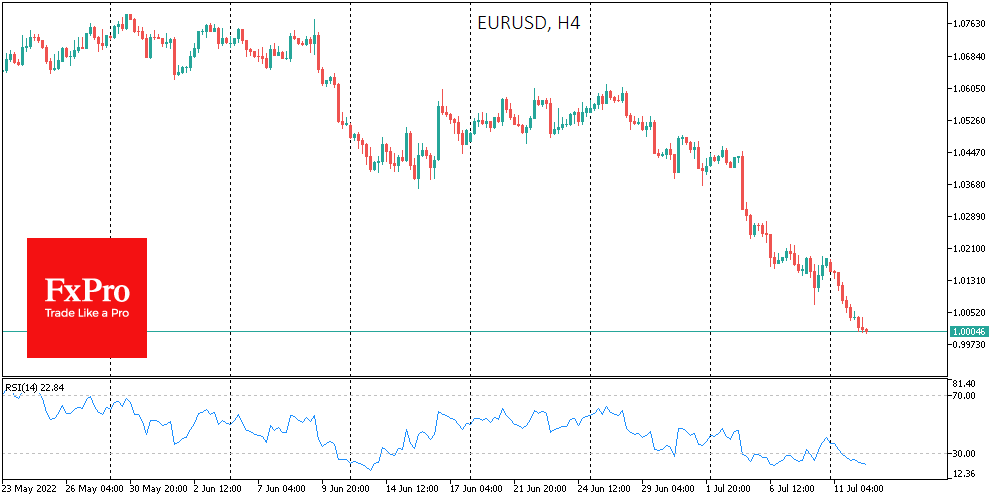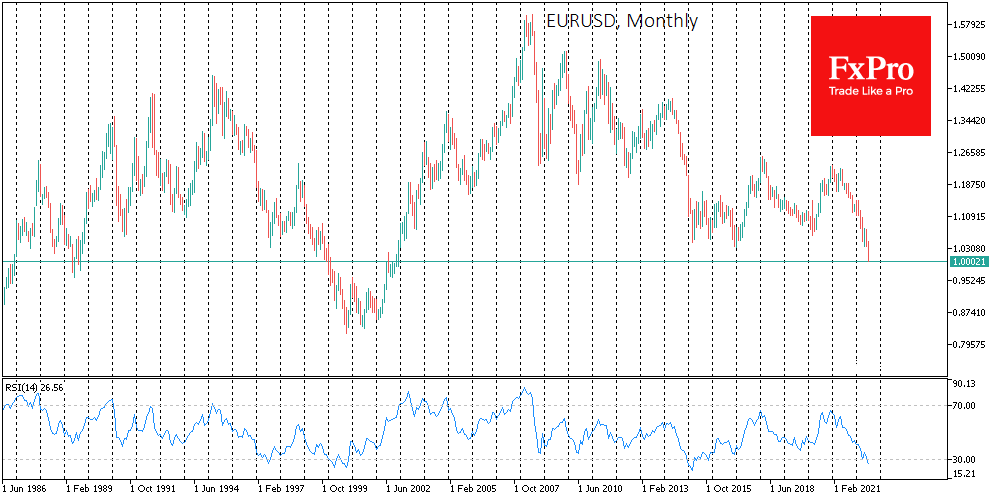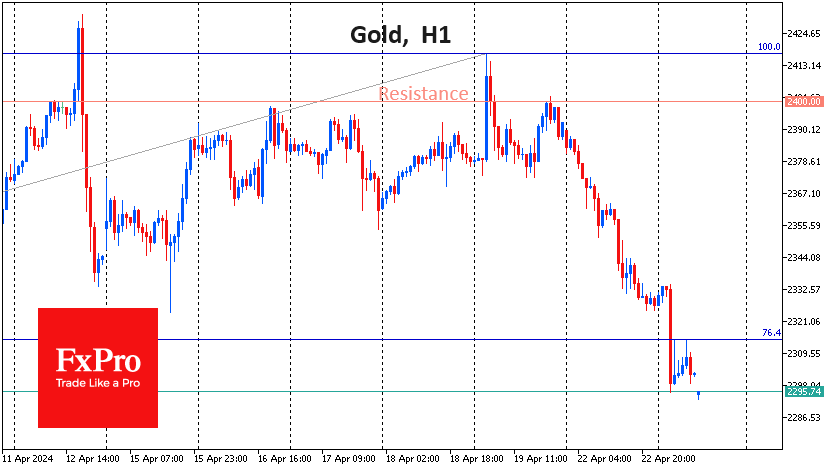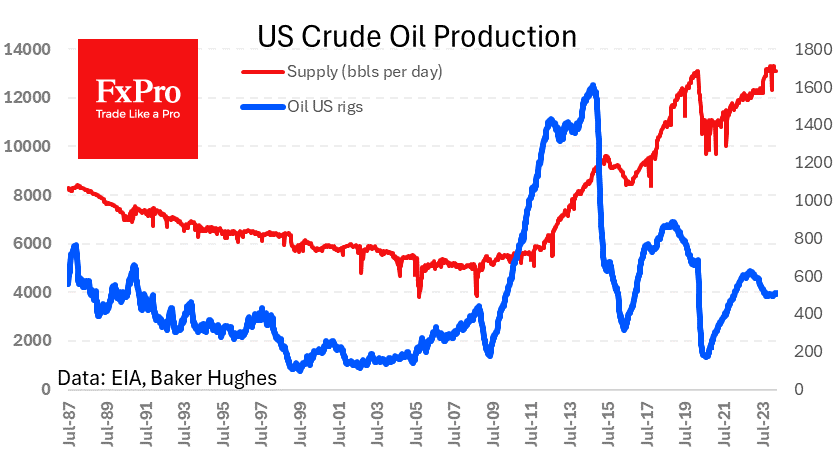Dollar proves exchange rate strength, now the turn for economical one
July 12, 2022 @ 12:41 +03:00
The euro is one hair from parity with the dollar, a psychologically important line above which the single currency has been trading for the last generation.
After losing more than 4% over the week, the EURUSD looks excessively and emotionally oversold, and the oversold conditions of RSI confirm this on all time frames above H4. However, the single currency should not hope for support at these levels.

History suggests that neither the fall below parity in 1999, nor the rebound above it in 2002, were turning points, only temporarily attracting the attention of the media and market participants. At the dawn of the single currency, the European Central Bank began forex interventions near 0.8500 and after a 30% fall for almost two years.
The situation is now very similar to the early 2000s, as the sell-off started from the same starting point. An analogy with the economic crisis can also be found. Both then and now, Germany was temporarily losing its status as the locomotive of the region, lacking the capacity and political will to consolidate the entire Euro-region around itself.
It is only logical to expect that central bank and government politicians would be forced to respond to questions about exchange rate depreciation. They may harbour hopes of an accelerated normalisation of the region’s monetary policy.
But the euro is a heavy machine whose movement is not easily stopped. It is worth expecting that Europe will no longer get away with soft market reassurances and modest actions, so the pressure on the single currency may persist for the foreseeable future.

Moreover, it is quite possible that near the 0.9800 level in EURUSD, there is a “pain point”, a quick fall under which will cause a market capitulation with an acceleration of the single currency’s decline. Investors should also be prepared for a new round of discussions on the viability of the Euro-region, which means that the coming days and weeks promise to be very nervous for the single currency.
The dollar index, where the euro holds the most weight, is also renewing its highs in 20 years. This dynamic has smoothly removed the issue of dollar sustainability that dominated the media at the end of 2020. We saw two other attempts to bury the dollar in early 2008 during the mortgage crisis and in 2011 at the start of QE. However, things quickly went wild, proving that the dollar, at least for now, is like Churchill’s definition of democracy: ‘the worst… except for all others that have been tried from time to time…’.
Right now, we see the exchange rate strength of the dollar. Still, we should be prepared that its economical and geopolitical power will manifest itself very soon if (or rather when) investors will come to grips with the sustainability of the debt burden of Japan and some eurozone countries, which could happen in the coming weeks.
The FxPro AnalystTeam







